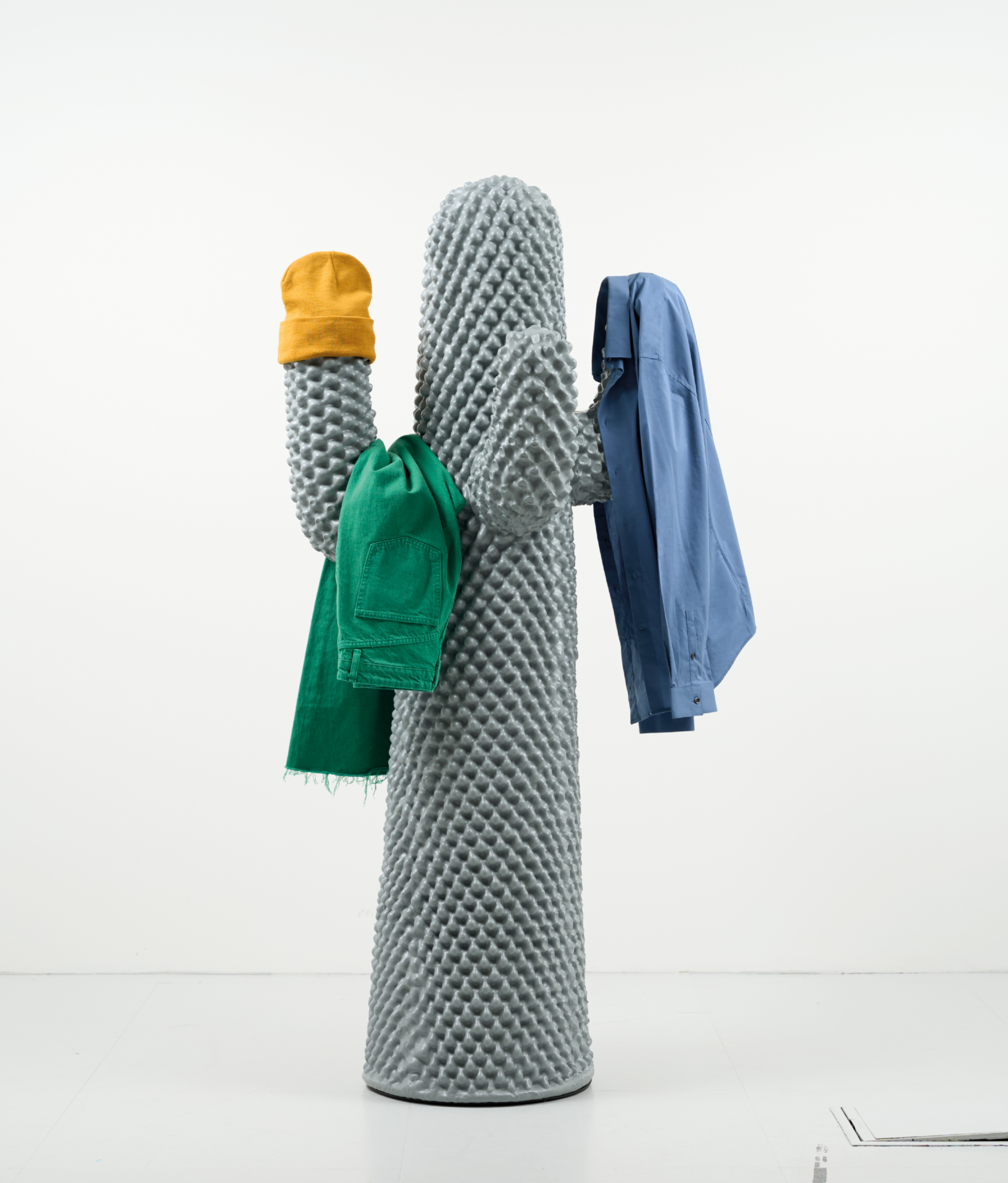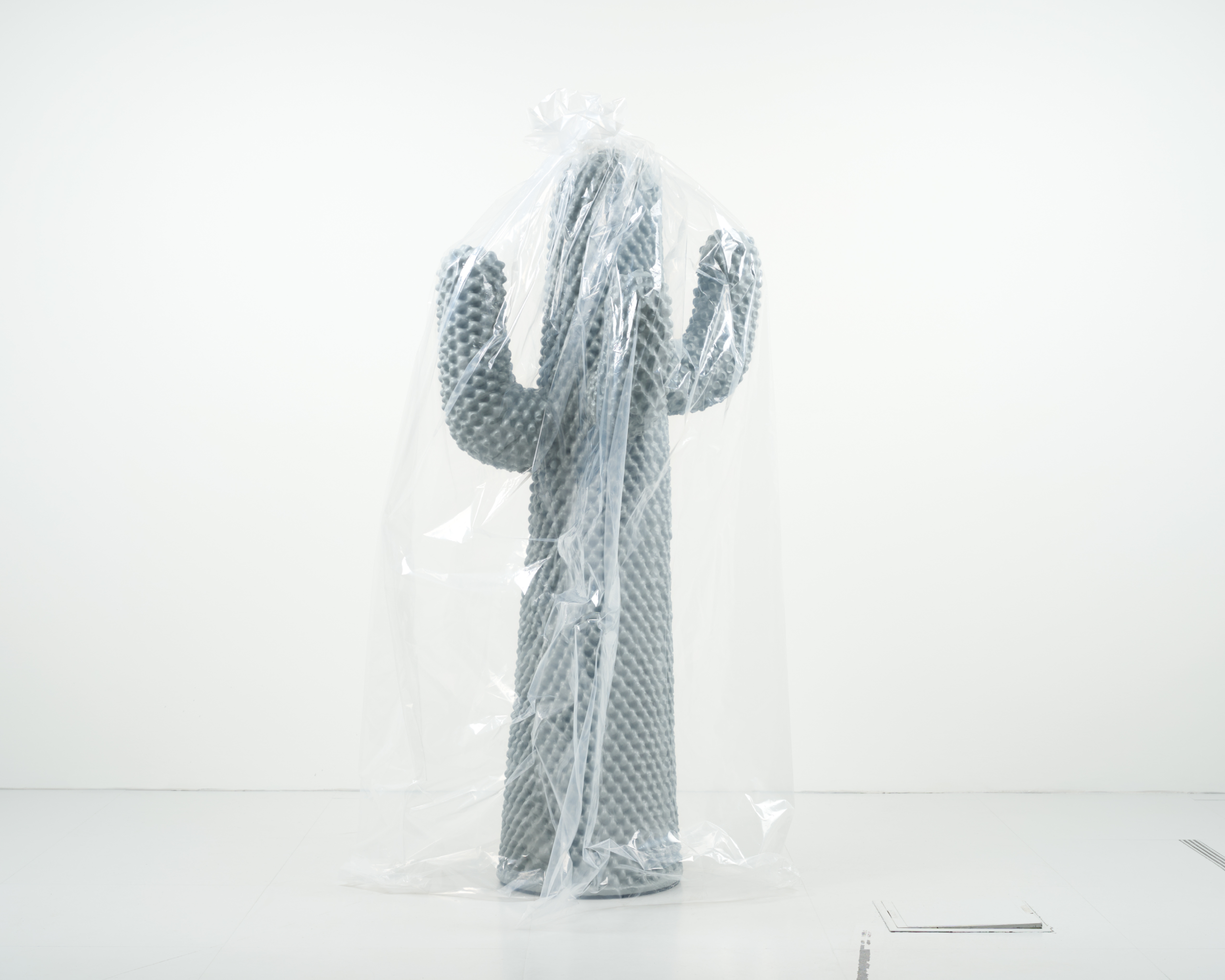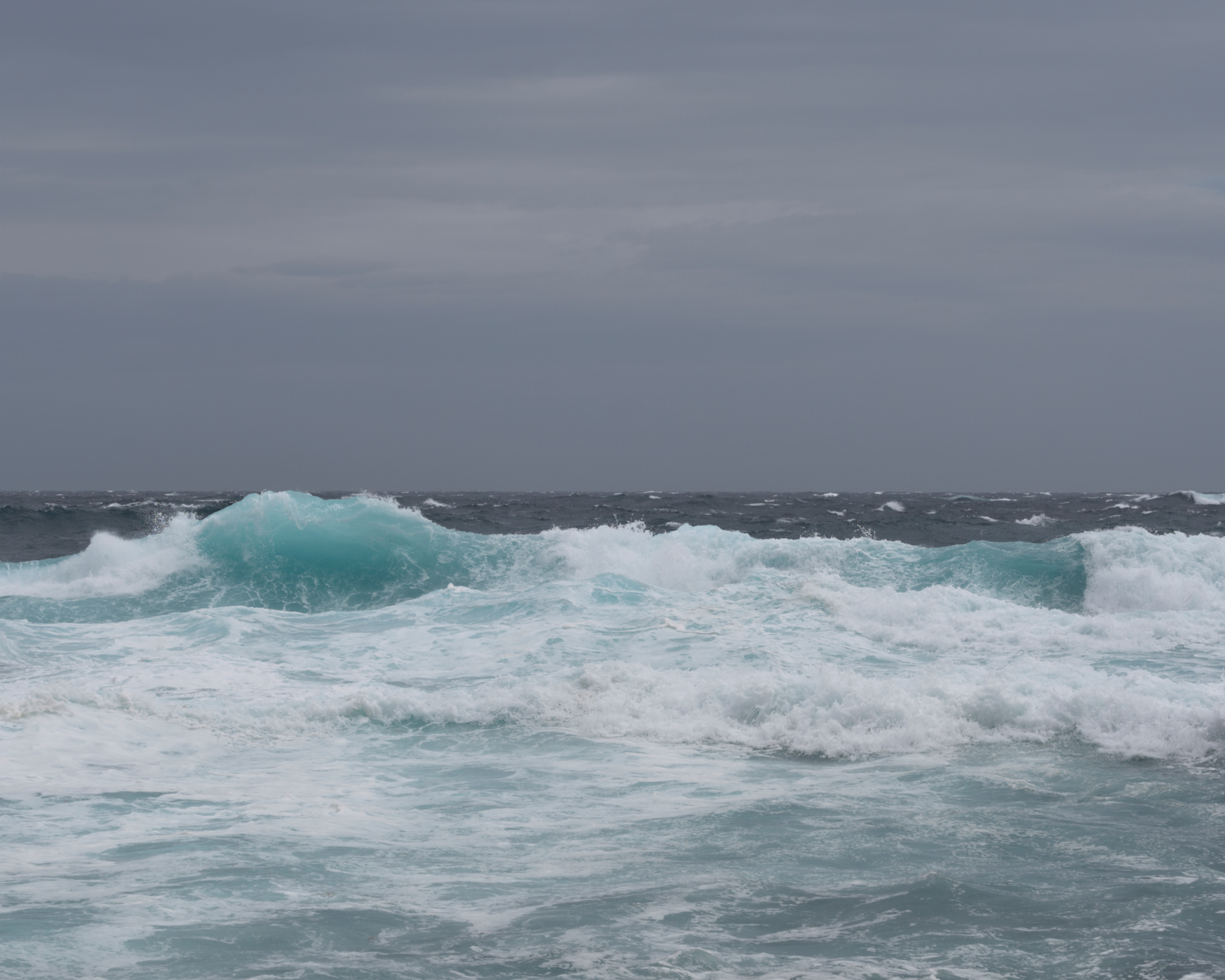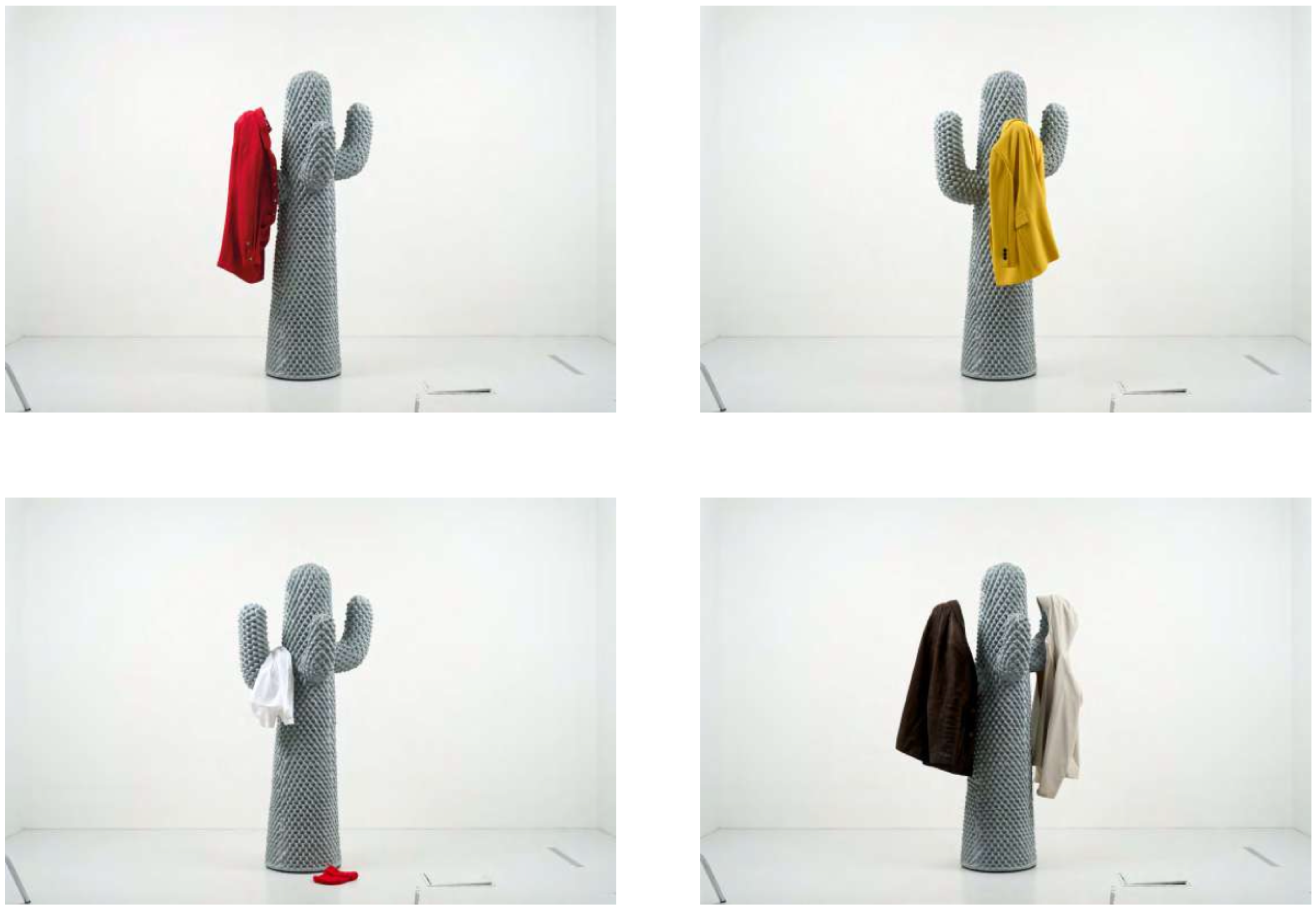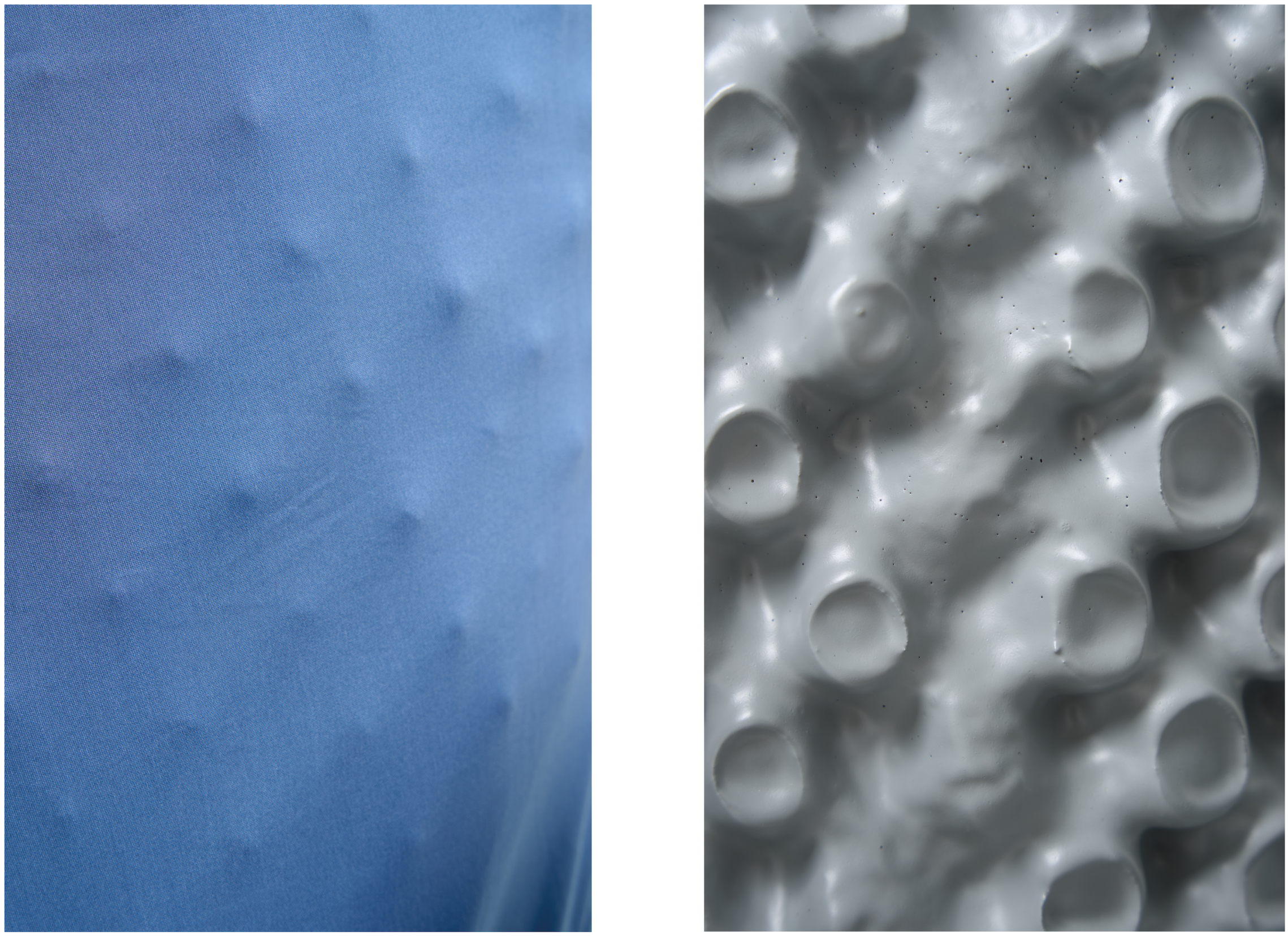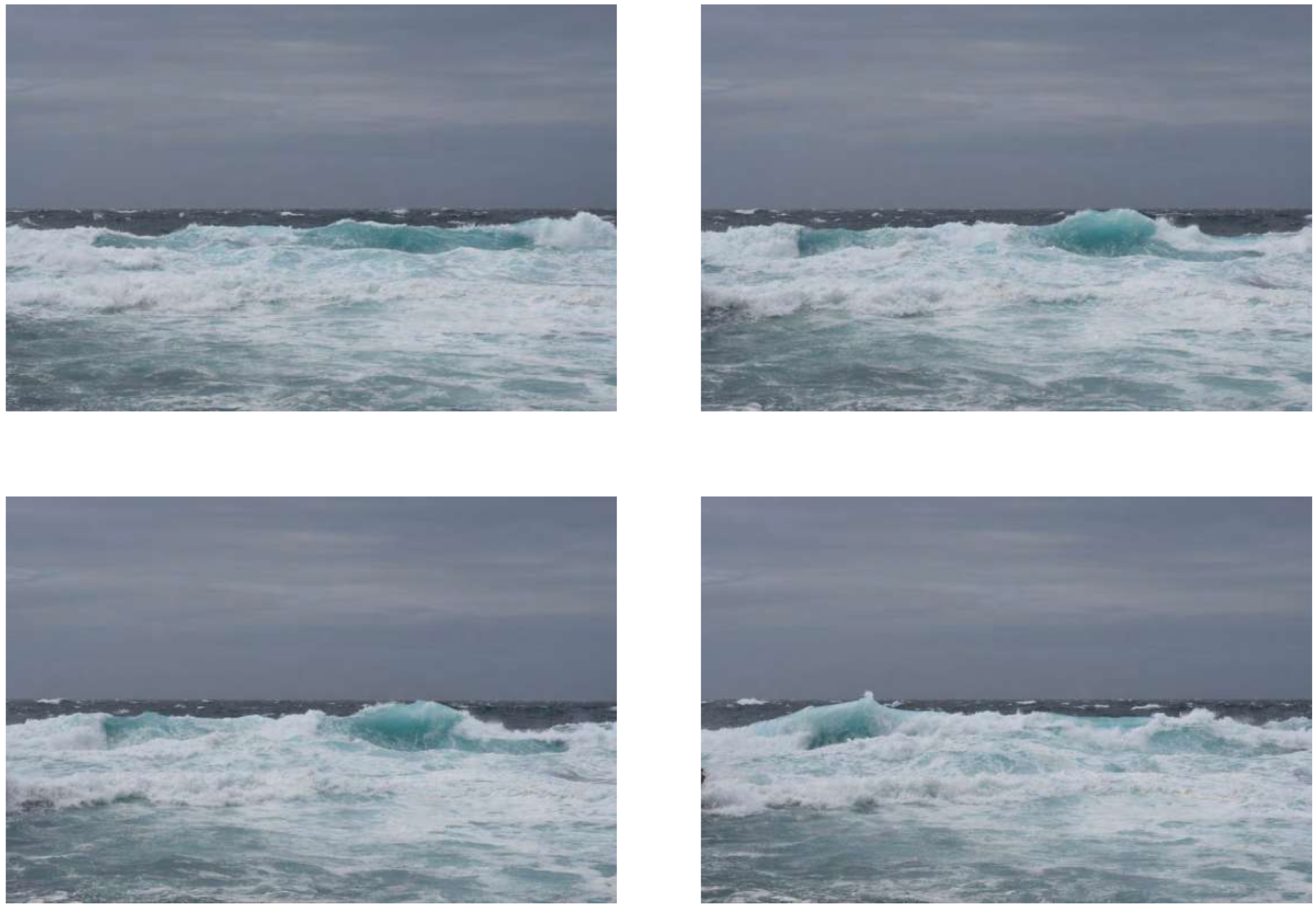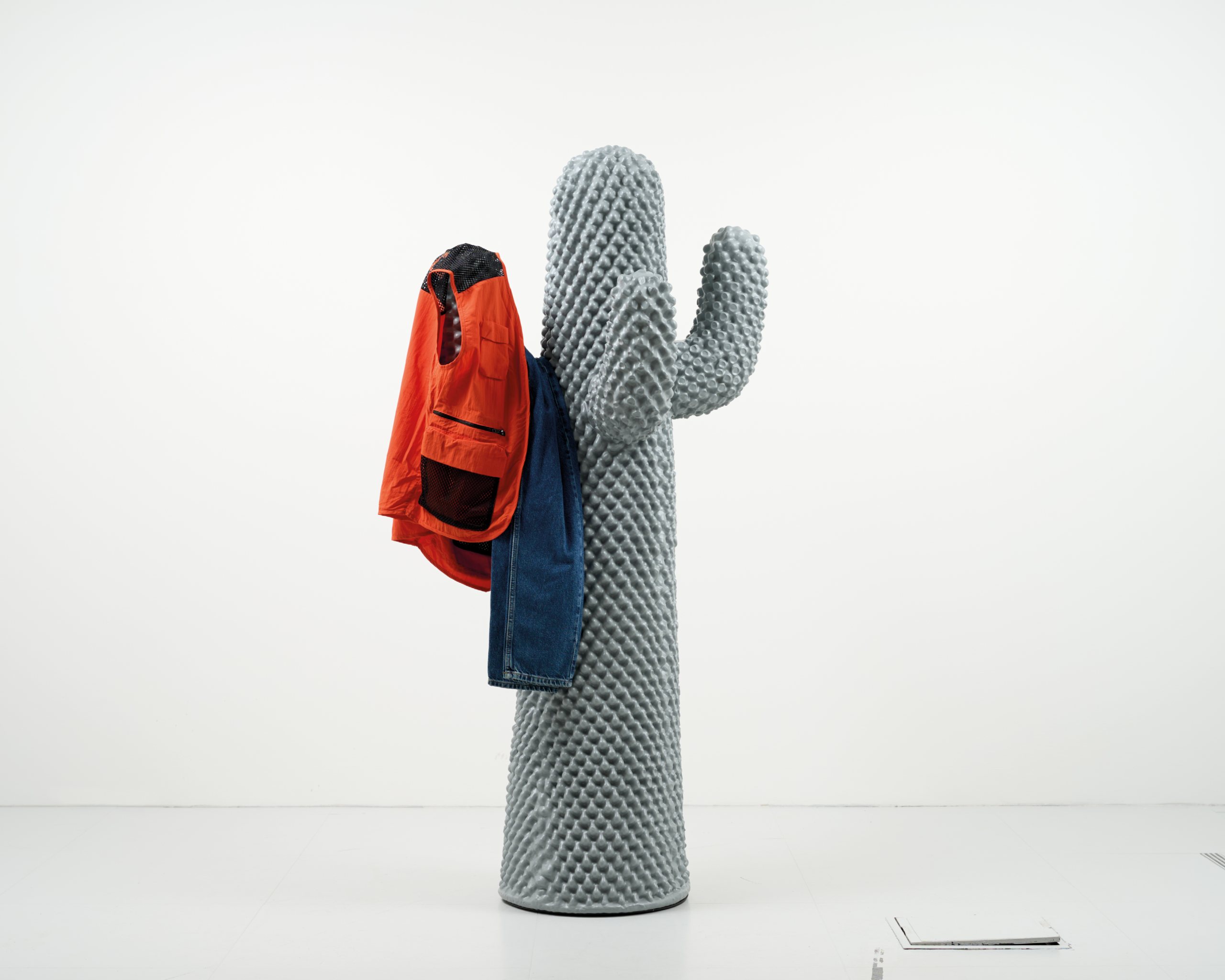Boredom is often seen as a void – an absence of engagement, a symptom of inertia. But what if, instead, it were a breeding ground for disruption? What if, rather than a passive state, boredom could be seen as an active force, a crack in the familiar, where the radical can take root?
Ideas bubble beneath the surface, shapeless at first, pressing against the edges of the expected. It is the mind’s resistance to monotony that births the unexpected, the strange, up until the delightful absurdity that refuses to conform.
Since 1966, Gufram has been answering this existential restlessness with its own irreverent vision. The brand has never settled for what is expected, instead turning the mundane into the extraordinary and defying the rigid boundaries of furniture design.
At the heart of this playful rebellion stands Cactus®. Conceived in 1972 by Guido Drocco and Franco Mello, this surreal totem of industrial design is a prickly paradox: a functional object that refuses to be taken too seriously, an aesthetic statement that resists categorisation.
With its exaggerated spines and outlandish silhouette, Gufram’s Cactus® mocks the very idea of utility, asking us to reconsider the role of design in our everyday lives. Four decades on, it remains one of the most recognisable and enigmatic pieces in the history of contemporary design, challenging conventions while maintaining an effortless, ironic, presence.
When Gufram was born in the 1960s, Turin was an epicentre of creative unrest. A new generation of architects and artists – among them Giorgio Ceretti, Piero Derossi, Guido Drocco, Piero Gilardi, and Franco Mello – were disenchanted with the rigid functionalism that dominated design discourse. Rather than resigning themselves to the lack of excitement, they transformed their restlessness into an aesthetic revolution.
Gufram became their vehicle for design subversion: a brand that eschewed the strict dictations of modernist rationalism in favour of the bizarre, the playful, the unexpected.
Boredom, for Gufram, was never a passive state – it was an itch that needed to be scratched, a tension that demanded release through radical forms and vibrant colours. Cactus®, in this sense, was a perfect embodiment of Gufram’s ethos: an object that exists in defiance of expectation, blurring the line between sculpture and furniture, between the practical and the absurd.
But what happens when even rebellion becomes expected? When the search for the extraordinary turns, paradoxically, into a form of routine?
Here enters Boring Cactus®, Gufram’s latest and most ironic twist on its own legacy. Stripped of its vibrant colours and dipped in a muted grey, this new iteration of Cactus® embraces the very monotony it once defied. Rather than rejecting boredom, Boring Cactus® leans into it – an audaciously dull statement piece that smoothly fits into the most understated interiors, from residential spaces to sterile office environments.
This playful contradiction is Gufram at its most subversive. If boredom was once the enemy of creativity, here it becomes the ultimate provocation. Boring Cactus® challenges our perception of radicalism: can something still be disruptive if it blends in? Is the absence of colour the loudest statement of all?
Even in this subdued form, Cactus® remains unmistakably itself – an icon that refuses to fade into true insignificance.
